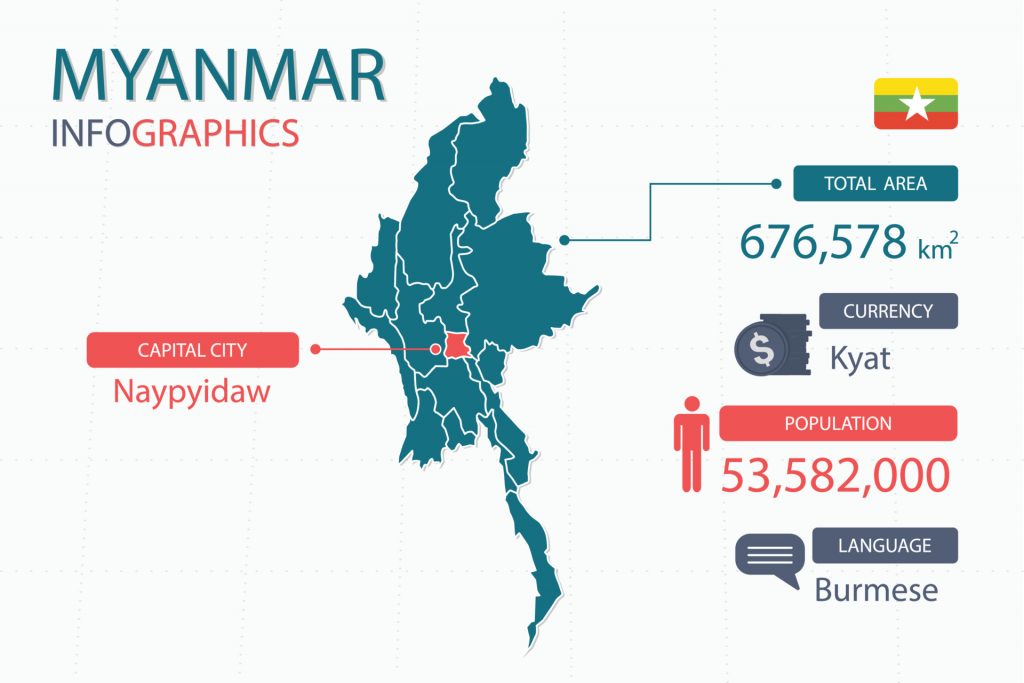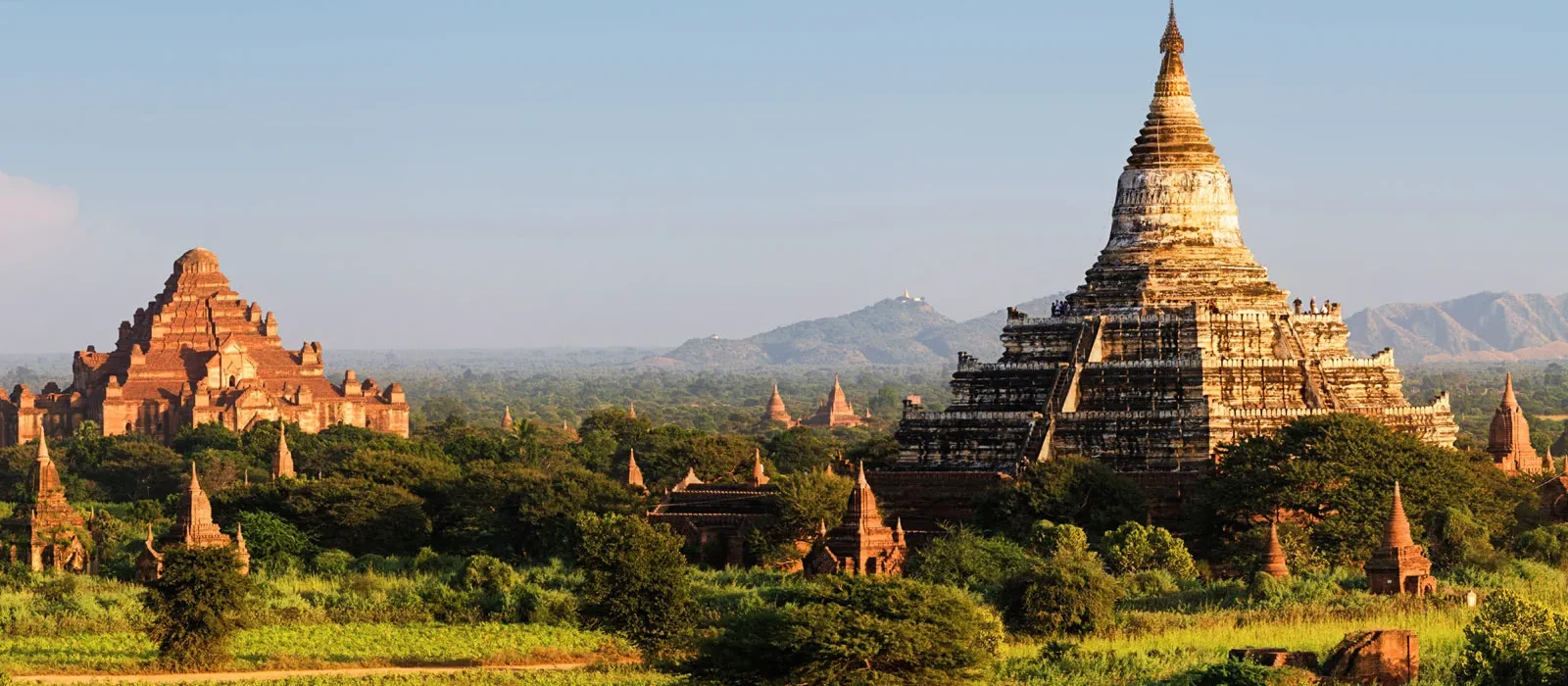The origins of the Burmese Langauge
The Burmese language is the official language of Myanmar, formerly known as Burma. In the constitution, it is officially called the Myanmar language, but Burmese is the name that most use to identify it. About 34 million people speak it as a native language, while another 10 million speak it as a second language. It is usually associated with the Bamar people, an ethnic group with roots in Myanmar. However, as the Myanmar population consists of many ethnic groups, and these groups are categorized based on region rather than language, Burmese is used among all regions in Myanmar, especially as there is a strong government policy to promote it. While it is spoken mainly in Myanmar, Burmese speaking communities can be found in various parts of the world, including in Bangladesh, Malaysia, Thailand, and in the United States. Our Burmese translators are well versed in most major industry fields and subjects such as Finances, Business, Manufacturing, Safety and Legal documents for a high quality Burmese translation.
Notable features of Burmese that speakers of European languages may find unusual or different include the fact that it is a tonal language (like Chinese), the syntax (subject-object-verb), and the grammatical patterns. For example, all verbs have particles attached to them indicating different meanings such as tense, whereas in many European languages, verbs are conjugated into different forms. Another characteristic of Burmese that differentiates it from larger world languages is its highly disglossic nature. That is, the register of Burmese used in media, literature, and other more ‘formal’ situations differs tremendously from more colloquial varieties. These differences can manifest themselves in terms of grammar, vocabulary, and pronunciation. Such disglossia makes it difficult for people who are not educated or literate in Burmese to understand and use media and other written forms of Burmese, and to interact in more formal situations.

Burmese language belongs to the Sino-Tibetan family of languages; this group includes the various Chinese varieties (e.g., Mandarin, Cantonese, etc.) as well as languages found in Tibet (e.g., Tibetan), and even some languages that are spoken in Thailand. Pali, an ancient language, had a profound effect on Burmese due to it being the language of Theravada Buddhism in earlier times, a religion that wielded considerable influence in Myanmar. Even today, 89% of the population practices Theravada Buddhism to some extent. Thus, much of the vocabulary that is found in Burmese can be traced back to Pali roots. Other influences in earlier times included the Mon language, Sanskrit, Hindi, and Chinese. More recently in history, there has been influence from European languages as well, such as Portuguese. Most notably, during the British colonial period and after it, English took part in shaping Burmese vocabulary. Interestingly, after the end of British rule, there has been a conscious effort by the government to eliminate, or at least constrain, the use of English loanwords and the English language in general. Therefore, many words have been created to replace English words and to identify new concepts in technological and scientific fields. These loan words are usually derived from Pali.
The Burmese writing system stems from the Brahmic script around the 12th century. Other scripts that have similar roots include Khmer, Thai, Lao, Devanagari, and more. Similar to these other writing systems, the Burmese script is an abugida. In this category of scripts, there is a main consonant with an inherent vowel sound, and certain marks denote a shift in this sound. There are 33 main consonants and 12 vowels. Like many other world languages in general, Burmese is written from left to right and from top to bottom. Even though Burmese is a tonal language, the tone is not marked in the readings and therefore must be implied from the context.
It has its own unique punctuation and formatting rules as well. For example, there are no space between words, but sometimes there are spaces between clauses to facilitate reading.
Historically, the standard Burmese of nowadays has roots in the language that is spoken around the vicinity of the Irrawady River Valley. In ancient times, the Pyu people spoke a Tibeto-Burman language, a language from which Burmese stems. During the 12th and 13th centuries, there was much contact and influence from both Pali and Mon languages, as groups speaking these varieties occupied the area that we know as present-day Myanmar. Influence from European languages occurred throughout the 16th to 19th century. Various factors such as trade and colonization affected the development of the Burmese language by the influence of European languages, such as Portuguese. In the 19th century, due to British colonial influences in politics and education, English was used as the primary language of education. After British rule, and since 1989, Burmese has been the official language of Burma, now known as Myanmar.
Nowadays, Burmese continues to be used as both official and colloquial languages in Myanmar. In regards to current dialectal differences, the major two varieties are categorized by Upper Burma (the Mandalay dialect) and Lower Burma (the Yangon dialect). Many differences occur in vocabulary rather than pronunciation. Overall the Yangon dialect is more representative of the standard dialect, as the media, economic influencers, and main political institutions are more likely to be based in Yangon or around that region. There is high government control over the language and they regulate its development, especially monitoring it for foreign influences such as English-based vocabulary, but also in terms of assuring that the population speaks it. For instance, minority languages are highly discouraged in both public and private sphere, and especially in terms of education.
VEQTA can provide you with a perfect Burmese translator for your Burmese translation, English to Burmese translation and Burmese to english translation for the your targeted locale. Our translations to Burmese are created with your target audience in mind to meet your expectations.
If you need to translate Burmese – Get in touch today!
A dedicated team of Burmese translators who combines Experience, Specialized Subject Matter Expertise with best Translation Practices to deliver quality second to none.
Burmese Document Translation
Burmese Legal Translation
Burmese I.T Translation
Burmese Health & Fitness Translation
Burmese Medical Translation
Burmese Marketing Translation
Burmese Financial & Accounting Translation
Burmese Tourism & Travel Translation


